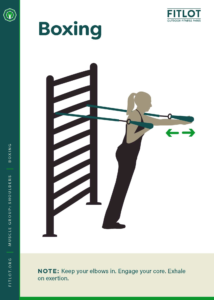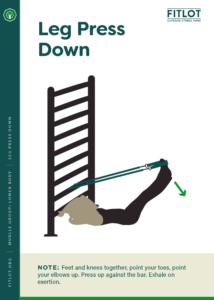Class Execution
Timing
Instructors are encouraged to use a BlueTooth speaker and electronic audio cueing for managing the circuit training. The app “Seconds” allows trainers to set rounds, rest time, and number of circuits. Having a loud audible bell helps the participants to stay on track. If a BlueTooth speaker is not available, the coach should use a stopwatch or timer to ensure accurate execution of the desired work and rest periods. The timer can be visible to participants, but it is not necessary. We strongly suggest using the audio cue and speaker.
Music
Instructors are encouraged to play music during class. The music should be motivational and upbeat. Because it is being played in a public space, the lyrics should be appropriate and the volume should be kept at a level that takes into consideration other people enjoying the public park.
Instructors may use a portable BlueTooth speaker to connect to their phone or other device. Your program organizer i.e. Department of Parks and Recreation may have a portable sound system that can be used as well.
Music sets the tone for the experience, and according to research, “can enhance endurance [of participants] by 15%” (Brunell, 2008). In addition, music can serve as an “ergogenic aid” to class participants (Bicknell, 2013). Taking the time to put together a great playlist takes effort, but the energy and enjoyment it can bring to your class is well worth it. Visit FitLot’s Spotify Playlist for some fun upbeat music you can use.
Vocal Instruction
Most instructors will not need a microphone. Some trainers may prefer to use one, as repeated class instruction does take a toll on an instructor’s vocal cords. The Department of Parks and Recreation may also have a portable mic system available. Instructors should feel free to use whatever suits them best.
Instructors not using microphones should be sure to use techniques that lend to adequate and safe vocal projection. Additional information and specific instructions on how to improve your vocal projection can be found here: http://mitcommlab.mit.edu/be/wp-content/uploads/sites/2/2017/09/Vocal-Exercises-to-Improve-Projection.pdf.
Monitoring Intensity
Instructors are encouraged to monitor exercise intensity using the Rating of Perceived Exertion scale and/or heart rate monitors if available. Instructors should use cues that describe signs of physical exertion to help participants clearly identify the intensity level they are working within. Be prepared to offer regressions, progressions and modifications for a wide variety of fitness levels and experience. The goal is to provide everyone with a safe, effective, and positive outdoor fitness experience.
See Appendix C for an RPE intensity chart that can be used for reference.
Station Identification – Using FitLot’s Deck of Movement Cards
Cones or station cards can be used to identify the different stations of the circuit. Here you can find a link to a “Deck of Movements” that you can print and use as station identifiers. These cards and visual aids are especially useful for helping class participants understand which resistance band movement you would like them to do at any of the 30 resistance band attachment sites located throughout the fitness park.
Printing Instructions: We recommend having these printed locally on a heavy card stock of 110 lbs Color Copy Cover or a 10 Pt C1S paper. Cards should be printed large enough to be visible. Laminating is suggested, and you can use adhesive magnets or magnets with clips to temporarily place these cards on the upright beams of the park.


